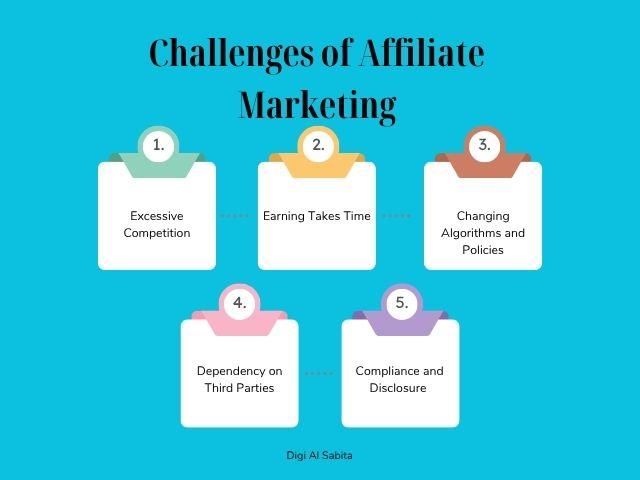Introduction: Affiliate Marketing
Affiliate marketing has become one of the most famous and cheap methods of making sales and passive income online. As companies look for new means of increasing their reach and consumers search for how to earn money from home, affiliate marketing occupies the center between entrepreneurship and e-commerce.
Here, we’ll discuss everything you should know about affiliate marketing, including the process, each step of the process, its benefits, challenges, various models, and successful tips.
- What is affiliate marketing?
- Process of Affiliate Marketing
- The Step-by-Step Process
- Types of Affiliate Marketing
- Popular Affiliate Marketing Media
- Advantages of Affiliate Marketing
- Challenges of Affiliate Marketing
- Tips for Best Affiliate Marketing
- Successful Affiliate Marketing Examples
- Future of Affiliate Marketing
- Conclusion
- (FAQs)
- 1. How does affiliate marketing work?
- 2. Can anyone start affiliate marketing?
- 3. How much earning can be made through affiliate marketing?
- 4. What are the best places to begin affiliate?
- 5. Is it necessary to own blog or websites to start?
- 6. How do I select the perfect products to promote?
- 7. Is affiliate passive income?
- 8. How can I drive traffic to my affiliate links?
- You may like:
What is affiliate marketing?
Affiliate is a pay-for-performance type of advertising where people (affiliates) earn a commission by advertising a business’s products or services. Whenever a customer buys something using the affiliate’s special referral link, the affiliate receives a percentage of the sale or a flat rate. Anyone can do this from anywhere online. This is an easy means of earning money with zero or low investment.
Both sides win with this model: the business generates more sales and display, and the affiliate earns money without having to develop their own products.
Process of Affiliate Marketing
The three players involved in the process are
Step 1: The advertiser or product creator sells a product or service.
Step 2: Affiliates or markets the merchant’s products to potential buyers.
Step 3: The customer makes the purchase using the affiliate link.
The Step-by-Step Process
- The affiliate becomes a member of an affiliate program.
- They are given a unique affiliate link or tracking code.
- The affiliate markets the product using content such as blogs, social media, videos, or email marketing.
- A user clicks on the affiliate link and goes to the merchant’s site.
- When the user buys, such as signing up, the affiliate receives a commission.
Types of Affiliate Marketing
There are various affiliate marketing models depending on the affiliate’s relationship and participation:
1. Unattached Affiliate Marketing: This type of affiliate has no personal connection to the product or niche.
2. Related Affiliate Marketing: This affiliate has some knowledge or influence in the niche but doesn’t personally use it.
3. Experienced Affiliate Marketing: This affiliate has personal experience with the product.
Popular Affiliate Marketing Media
Affiliates promote through various media:
- Blogs and Niche Sites: Publishing reviews, tutorials, or comparison posts.
- YouTube and Video Content: Producing product demos, unboxing, or tutorials.
- Social Media: Endorsement on Instagram, TikTok, Twitter, or Facebook.
- Email Marketing: Sending recommendations for products to a list of subscribers.
- Podcasts: Mentioning sponsors and affiliate deals within episodes.
- Search Engine Marketing: Paid search advertising with target buyer intent keywords.
Advantages of Affiliate Marketing
1. It has low start-up expenses. Most affiliate programs are free to join, making it ideal for beginners.
2. It generates passive income. Once you set up content and drive traffic, you can earn commissions around the clock, even while sleeping.
3. This is flexible and scalable. You can work from anywhere and promote products globally. As your audience grows, your income capacity increases.
4. Here we can apply the Win-Win Model. Merchants only pay upon getting results, and affiliates are paid for performance. This minimizes risk and promotes quality marketing.
5. There are multiple income streams. Affiliates may promote various products under different programs to diversify income and minimize reliance on a single source.
Challenges of Affiliate Marketing

There are lots of challenges to creating opportunities here:
1. Excessive Competition: Well-liked niches such as health, finance, and technology have many participants, and it is hard to stand out.
2. Earning Takes Time: Affiliate marketing is not a get-rich-quick opportunity. Patience level should be high. Time must be spent developing traffic, trust, and conversions.
3. Changing Algorithms and Policies: Algorithms and policies for search engines and social media sites frequently change, impacting traffic. Affiliate programs also have the ability to alter or discontinue commission setups.
4. Dependency on Third Parties: Affiliates have limited influence over the merchant site, customer interaction, or inventory availability.
5. Compliance and Disclosure: Affiliates are required to comply with legal rules such as the disclosure of affiliate relationships, which can impact conversions and trust.
Tips for Best Affiliate Marketing
- Select the Proper Niche
- Know Your Audience
- Sell Quality Products
- Develop Value-Driven Content
- Build an Email List
- SEO and Organic Traffic Focus
- Tracking and Analytics Usage
- Transparency
Successful Affiliate Marketing Examples
- Pat has generated over six figures per month by using marketing tools such as ConvertKit and Bluehost.
- Owned by The New York Times today, Wirecutter is a review website that generates millions of affiliate income.
- Michelle generates considerable revenue by promoting financial and blogging tools.
- These instances demonstrate how authenticity, consistency, and niche targeting can make an affiliate a career.
Future of Affiliate Marketing
In this era, the affiliate has vast space and a future. This is the time to affiliate for making passive income.
1. AI software enables affiliates to craft improved content, product suggestions, and targeted campaigns that drive conversions.
2. Social media micro-influencers with specialized audiences increasingly generate affiliate sales through sponsored content and affiliate relationships.
3. Voice search and visual search on sites like Pinterest will create new affiliate opportunities.
4. Since most users access from mobile devices, affiliates need to make their content mobile-friendly and fast.
5. As governments apply strict advertising regulations, affiliates must be more transparent and compliant to establish trust and stay out of trouble.
Also read: The Future of Social Media: Top Trends in 2025
Conclusion
Affiliating is one of the easiest ways to earn online. Whether you’re a blogger, YouTuber, or social media influencer, you can earn by posting about products that you truly believe in. But overnight success does not exist; it takes consistency, patience, and a keen sense of your audience.
Through a concentration on value creation, genuine recommendations, and ethical behavior, an affiliate can become a profitable side business or full-time venture for anyone.
(FAQs)
1. How does affiliate marketing work?
It is a pay-for-performance marketing technique in which you earn a commission by selling other individuals’ or businesses’ products. You earn money when someone purchases using your referral link.
2. Can anyone start affiliate marketing?
Yes, anyone who has internet access can start affiliating. There is no special requirement; you just need a website to get started, though possessing one enhances your reach and credibility.
3. How much earning can be made through affiliate marketing?
It all depends on your niche, audience, marketing models, and consistency. It can be dollars to 100 or 1000 of dollars.
4. What are the best places to begin affiliate?
You can join direct programs from brands. But there are popular sites like Amazon Associates, ShareASale, ClickBank, Rakuten, and CJ Affiliate.
5. Is it necessary to own blog or websites to start?
It is not compulsory to have a blog but it will helpful to enable you to share useful content, build organic traffic, and boost conversions.
6. How do I select the perfect products to promote?
Promote products and services that are exactly related to your niche and audience. Quality, trust, and value should always come first over commission rates.
7. Is affiliate passive income?
It can be. Set up once, your content and links can keep bringing in money indefinitely with little maintenance.
8. How can I drive traffic to my affiliate links?
SEO, social media, email marketing, YouTube videos, and paid advertising to attract traffic to your content and links.
